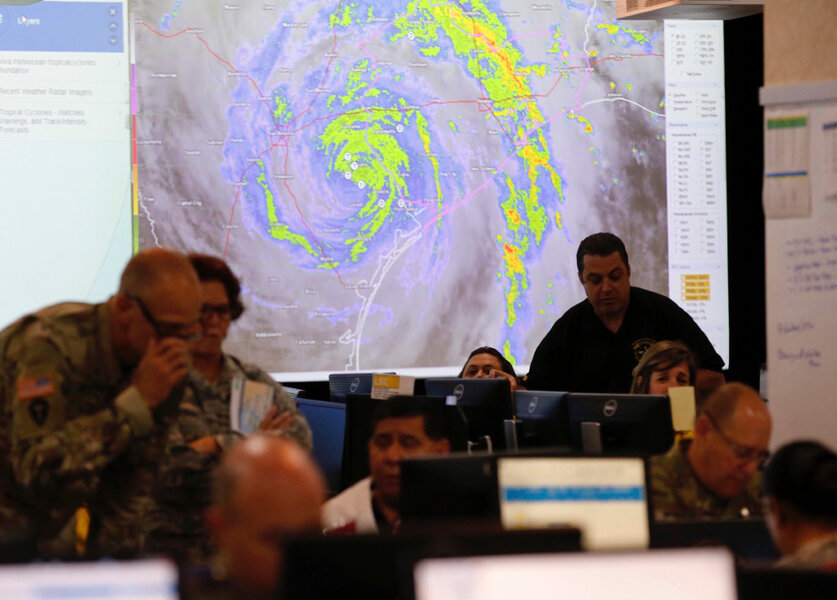Harvey’s lesson in weather forecasting
An old cartoon from decades ago depicts a disgruntled man in a snow jacket writing a letter to a TV station. The letter states: “Dear weatherman, I just shoveled a foot of ‘partly cloudy’ off my driveway.” Such easy jabs at inaccurate forecasts are much fewer these days. Satellite imaging, sensors, and computer modeling now provide forecasts with a far better record than even a few years ago. And a good example of the strides in meteorology was the nearly spot-on forecasts for extreme flooding from hurricane Harvey.
The forecasts were not yet perfect enough for first responders to know every neighborhood that might be inundated. Still, the improved precision did take much of the equivocation out of the planning in Texas and Louisiana and, notably, supported the critical call not to evacuate millions of people from the Houston area.
That progress reinforces the very purpose of ongoing advances in weather forecasting: People have a strong desire not to fear the environment but to live in rapport with it. Storms need not be seen as mortal danger if their timing, intensity, and effects are better known in advance through the intelligence of meteorologists and other atmospheric scientists. The might of a storm is little match against the right information delivered in time.
Despite the complex variables of weather patterns, forecasts of today that are five days out are as accurate as the three-day forecasts of a decade ago. The steady improvement has not only saved lives but further aids businesses and individuals in planning and land-use decisions.
The United States is poised “to build a weather and water-ready nation where everyone is able to take appropriate action to be ready and responsive to impending extreme water events,” says Louis Uccellini, director of the National Weather Service.
In April, President Trump signed a bipartisan bill, the Weather Research and Forecasting Innovation Act, which requires even more improvements in forecasting from the National Oceanic and Atmospheric Administration and its National Weather Service, Office of Oceanic & Atmospheric Research, National Ocean Service, and National Water Center. But Mr. Trump’s funding proposals for NOAA would undercut the act’s goals. After Harvey, however, Congress is unlikely to agree to such cuts.
Also after Harvey, Americans can better appreciate how breakthroughs in weather science can steadily reduce the fear of wind or water from a storm – or any forecast that fails to foresee a foot of snow.








